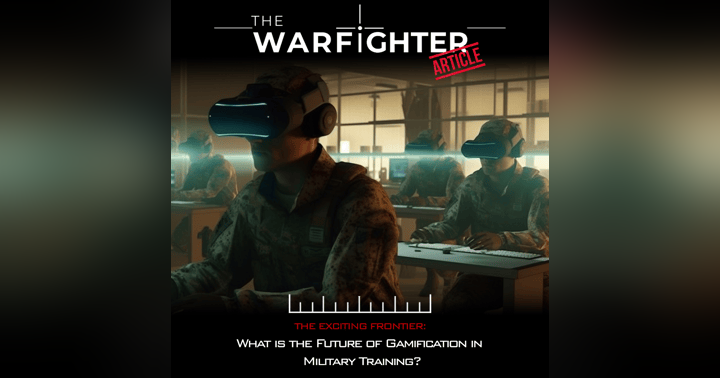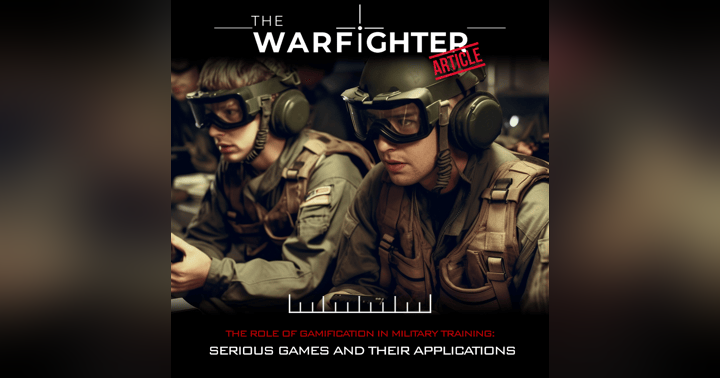Use of XR (Extended Reality) in the Military

Introduction
With the explosion in use of immersive technologies (i.e. virtual reality, augmented reality and mixed reality) in the commercial space, there has been a flurry of articles and discussions around the potential impact of XR on the world around us. Such technologies are already being used to increase situational awareness in military environments, enhance mission planning and military training, and improve decision making capabilities by providing a more comprehensive overview of an environment or situation.
If you're looking for a great overview from someone already serving in the British Army then we'd highly recommend listening to our below podcast:
The explosion in use of immersive technologies (i.e. virtual reality, augmented reality and mixed reality) in the commercial space has brought about a flurry of articles and discussions around the potential impact of XR (extended reality) on the world around us.
XR is an umbrella term used to describe a variety of immersive technologies, including virtual reality (VR), augmented reality (AR) and mixed reality. The explosion in use of immersive technologies (i.e. VR, AR, MR) in the commercial space has brought about a flurry of articles and discussions around the potential impact of XR on society.
An article published by The Verge summarizes this as follows:
Such technologies are already being used to increase situational awareness in military environments, enhance mission planning and military training, and improve decision making capabilities by providing a more comprehensive overview of an environment or situation.
-
Use of XR in the military:
-
Military training
-
Decision making capabilities
-
Extending a soldier’s field of view through the use of AR-enabled devices will increase situational awareness and help them to identify obstacles ahead. This can also be used for mission planning, as well as training purposes. For example, it could be used to simulate complex combat scenarios that are difficult or dangerous for soldiers to experience in real life.
-
Simulation training vs live training
Simulation training is better for soldiers, because it gives them more opportunities to practice in a safe environment. If soldiers are going through live fire training, they will be less likely to make mistakes and hurt themselves. Also, they will be able to use their weapons more efficiently in the field if they understand how they work. This reduces the risk of injury or death while on duty.
Live training is better than simulation training because it allows soldiers to learn how difficult it can be in real life situations without any injuries or deaths occurring. For example, if a soldier were running through a forest during live gunfire exercises with no protective gear on them (i.e., no helmet), then there is a higher chance that this person could get injured from something like shrapnel from an explosion nearby or being shot by someone else who wasn't supposed too shoot at all! It's safer for everyone involved if we have these types of restrictions put into place beforehand."
Mixed Reality
Mixed Reality, or MR, is a hybrid of AR and VR. It's a powerful training tool that combines the best of both worlds: the immersion of virtual reality, with the interactivity of augmented reality.
MR is a technology that uses 3D graphics to overlay simulations onto real objects in space. This allows you to interact with your environment while wearing goggles or headgear. For example, you could use MR to practice flying an airplane—but instead of staring at a screen while wearing VR goggles, you could walk around your aircraft (in this case it would be an actual plane) and interact with it as though it were actually there in front of you. Mixed Reality allows soldiers to train on real terrain without risking damage to equipment or injury from accidents that might occur if soldiers weren't prepared for every eventuality during simulated combat missions using only traditional methods like books and classrooms.
Learn more about how Defence is using Mixed Reality in our Warfighter Article here.
Virtual Reality
Virtual reality (VR) is a computer-generated environment that can be explored and interacted with by a person. It incorporates mainly auditory and visual feedback, but may also allow other types of sensory feedback like haptic. This immersive environment can be similar to the real world or it can be fantastical.
Virtual reality has been used in several military applications, including training simulators for pilots, surgeons and tank operators. These systems are often integrated into video games as well as for recreational use.
Learn more about how Defence is using Virtual Reality in our Warfighter Article here.
Augmented Reality
-
Augmented Reality (AR): AR is a technology that superimposes a computer-generated image on a user's view of the real world, so that the computer-generated image appears to exist in the same physical space as the real world.
-
Virtual Reality (VR): VR is an artificial environment where users can interact with synthetic characters and manipulate objects from a first person perspective. The overall goal of virtual reality is to create an illusion of reality for users to feel like they are in another place.
The military is embracing XR as a tool that can help train soldiers and improve situational awareness and decision making
The military is embracing XR as a tool that can help train soldiers and improve situational awareness and decision making. In fact, the Army's Training And Doctrine Command (TRADOC) has recognized the importance of XR for training, simulation and synthetic training. Using XR in these settings can improve situational awareness and decision making by providing better information to soldiers before they enter the field or operational environment. It also helps them develop skills that are transferable across domains—from air traffic control to naval operations to ground combat—and may reduce training costs by upskilling existing personnel with virtual reality technology.
Conclusion
As we can see, XR technologies have the potential to be a game-changer in the military. By providing soldiers with a more immersive and realistic training environment and allowing them to practice complex tasks before they're deployed on actual missions, these technologies could save lives and make us safer.










